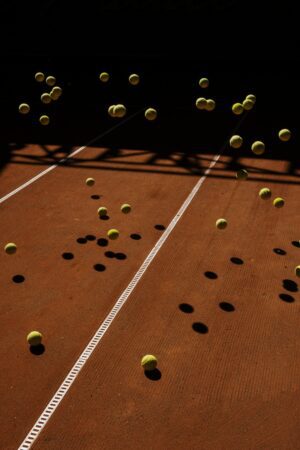
How Are Tennis Balls Made? Step-by-Step
You’ve likely seen tennis balls bouncing vigorously across a court during a match, but have you ever wondered how these little spheres of perfection are crafted? Making tennis balls is a fascinating, detailed process that combines science, engineering, and precision. From the resilient rubber core to the iconic fuzzy felt exterior, let’s break down the step-by-step process of how tennis balls are made.
Step 1: Gathering Materials
The two main materials used in making tennis balls are rubber and felt fabric. The rubber forms the core of the ball, while the felt gives it that recognizable fuzzy texture and influences how it bounces and interacts with the racket and surface.
- Rubber is typically natural or synthetic, designed for durability and elasticity.
- Felt covering is made from a mix of nylon and wool, giving it a durable yet aerodynamic structure.
Step 2: Molding the Rubber Core
The heart of any tennis ball is its pressurized rubber core. Here’s how it’s made:
- Rubber Mixing: Crude rubber is combined with other chemicals and additives in a large mixer. This forms a compound with the right strength and flexibility.
- Cutting: The rubber compound is cut into small, pre-measured pieces known as slugs.
- Molding: The slugs are placed into molds with a spherical cavity and then heat-pressed to form a hollow rubber hemisphere. The heat creates a shape that can withstand high impact.
Each tennis ball comprises two rubber hemispheres, which will be joined later to form one sealed ball.
Step 3: Cementing and Joining the Core
To assemble the core, the two molded rubber halves are glued together and sealed using heat and pressure. This stage involves:
- Application of Adhesive: A thin layer of adhesive is applied to the edges of each hemisphere.
- Joining Halves: The two halves are brought together in a pressurized mold, which bonds them tightly.
- Pressurization: During this process, pressurized gas is injected into the core to create the desired air pressure inside the ball. This is what gives tennis balls their characteristic bounce.
The sealed core is left to cure until it hardens and holds its shape.
Step 4: Trimming and Smoothing
Once the rubber ball core is formed, any excess material or uneven edges are trimmed away. This ensures a smooth shape that will meet performance standards. Machines polish the surface to enhance the rubber’s natural finish, preparing it for the next stage.
Step 5: Applying the Felt Cover
The fuzzy felt layer is what makes a tennis ball instantly recognizable, and it’s applied with both functionality and aesthetics in mind. Here’s how it works:
- Cutting the Felt: Sheets of felt are cut into dog-bone-shaped panels. These panels will wrap around the ball.
- Coating with Adhesive: Both the ball surface and the felt panels are coated with adhesive to create a strong bond.
- Wrapping the Ball: The felt panels are carefully placed around the rubber core. Machines ensure they stretch and fit perfectly, leaving no gaps.
- Pressurized Heating: The balls are once again subjected to heat and pressure, which activates the adhesive and smoothens the seams for a neat, durable finish.
Step 6: Quality Control
Before they make their way to the tennis court, each tennis ball undergoes rigorous quality testing to ensure it meets international standards like those set by the International Tennis Federation (ITF). Standards include:
- Bounce Height Test: Balls are dropped from a specific height, and their bounce is measured.
- Weight and Size: Each ball is checked for consistent diameter and weight.
- Felt Durability and Color: The felt quality is tested to ensure it’s resilient and maintains its “optic yellow” shade under various conditions.
- Pressure Test: Internal air pressure is checked to maintain performance during gameplay.
Defective balls that fail these tests are recycled or discarded.
Step 7: Packaging and Distribution
Once the tennis balls pass quality testing, they are packaged into pressurized cans to preserve their internal pressure and bounce. These cans are air-sealed to ensure the balls are fresh when they’re opened. From there, the balls are shipped to retailers and courts worldwide, ready for use by players of all levels.
Fun Fact
Pressurized tennis balls aren’t the only kind out there! Some manufacturers create pressureless tennis balls, which are firmer and don’t rely on internal air pressure to bounce. They’re often used for practice since they don’t lose bounce over time like traditional pressurized balls.
Bringing It All Together
The making of a tennis ball is truly a blend of design, precision, and rigorous testing. From the bouncy rubber core to the durable felt covering, each step ensures that these small but mighty spheres perform for hours on the court. The next time you see a tennis ball fly across a match, you’ll know exactly how much effort goes into crafting that perfect bounce!
